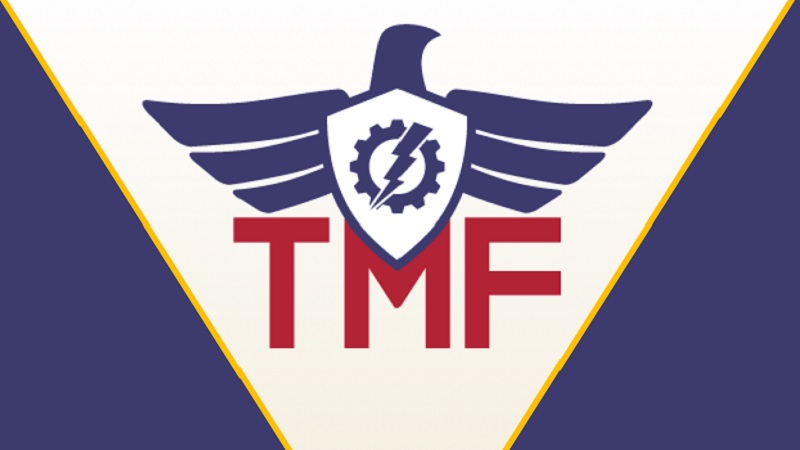
At U.S. Customs and Border Protection, a $15 million Federal investment has helped move an antiquated, COBOL-based payment system to the cloud, allowing the nation’s second-largest revenue-collecting Federal agency to efficiently take in more than $90 billion in annual duties, taxes, and fees.
The National Archives and Records Administration is using $9.1 million in Federal dollars to upgrade legacy information systems to cloud-based platforms, helping veterans and their families obtain records needed to access benefits – and drawing bipartisan praise.
The infusions of funds is part of the emerging legacy of the Technology Modernization Fund (TMF), approved in 2017 to help agencies overhaul legacy IT systems and guard against cyberattacks. Since becoming law, the TMF has received $1.25 billion in Federal funds and invested nearly $700 million in 38 projects across 22 Federal agencies to upgrade everything from cybersecurity to outdated email systems.
The technology leaders who dole out the dollars recently observed the fund’s fifth anniversary, an occasion the White House marked by releasing a tribute from Clare Martorana, Federal chief information officer and TMF board chair. “The TMF’s innovative funding model is game-changing,” she wrote. “… It’s safe to say that the TMF works, and it works well.”
Rep. Gerry Connolly, D-Va., an influential voice on government IT issues, praised the TMF at a hearing last year. “The (TMF) program is proving incredibly successful, so successful, in fact, that demand is wildly outpacing resources,” said Connolly, who noted that at the time of the May 2022 hearing only two projects supported by the fund had been delayed, “and not a single project resulted in a cost overrun.”
The Biden administration recently requested a $200 million infusion for the TMF in its fiscal year 2024 budget, saying in a budget blueprint that the fund “has proven to be a catalyst to show what is possible across government” in modernizing IT, upgrading cybersecurity, and leveraging technology across agencies.
While IT modernization is that rare Washington issue that tends to attract bipartisan agreement, the TMF has drawn criticism from some Republicans. At the hearing last year of the House Oversight and Reform Committee’s Subcommittee on Government Operations, Rep. Andy Biggs, R-Ariz., questioned “whether the Biden administration intends for the TMF to be a slush fund for IT priorities.”
Biggs raised particular concern about a change the TMF made in its reimbursement requirements. The original legislation establishing the TMF directed agencies that receive funds to reimburse the money to the TMF, at rates set by the Office of Management and Budget and the General Services Administration (GSA), which houses the fund’s program management office.
For awards made through August 2021, according to hearing testimony, Federal agencies were required to reimburse the award amount in full. Starting in September 2021, however, agencies were allowed to apply for partial reimbursement. Other members of Congress had supported partial reimbursement so that agencies could quickly deploy the modernization funding to improve Federal agency IT systems stressed by demands of the coronavirus pandemic and increased cyber assaults.
Some industry experts agree the fund is providing important assistance as the government scrambles to update antiquated systems and wrestle with an ominous cyber threat landscape. “The TMF has turned out to be an effective way for Federal agencies to accelerate things they have wanted to do in updating legacy systems all along,” Jim Richberg, public sector field CISO at Fortinet, said in an interview with MeriTalk.
Richberg, a former national intelligence manager for cyber in the Office of the Director of National Intelligence, said TMF assistance is especially important because when he worked in government IT, “we were often dealing with absolutely antiquated technology.”
The TMF is overseen by a Technology Modernization Board that evaluates agency proposals for funding separate from the government’s annual appropriations processes. TMF officials say their funding model is innovative and agile because they review investments quarterly to keep projects on track, tie funds to completion of specific milestones, and provide subject matter expertise in addition to money.
There have been missteps along the way. The TMF, for example, awarded $187 million in 2021 for GSA’s identify-proofing website, Login.gov. GSA’s inspector general recently determined that GSA officials misled Federal agencies for years by falsely claiming that the site met government standards for identify-proofing – and used misleading language to secure additional funds from the TMF.
“This was a serious issue, which GSA identified and has been working very collaboratively with the IG to address since we learned (of) the problem in early 2022,” GSA Federal Acquisition Service Commissioner Sonny Hashmi acknowledged during a hearing last month, where he outlined corrective steps that GSA is taking.
Federal officials point to numerous successes, saying TMF funds have helped agencies do everything from protecting personal information for Social Security beneficiaries and securing data for student loan recipients to improving the government’s ability to recruit job-seekers.
The Department of Agriculture (USDA), for example, has received five TMF grants totaling more than $80 million and covering areas such as network modernization; the agency’s move toward a zero trust security architecture, and cloud adoption. “The TMF is extremely important to the USDA,” Gary Washington, the department’s chief information officer, said at a hearing.
He added that the fund is especially useful in supplementing a Federal appropriations process that “is not conducive to rapidly supporting modernization efforts.”
Richberg, of Fortinet, echoed that sentiment. “In the environment we’ve been in for the past couple of decades, you have a continuing budget resolution for most of the years, and you can’t even start new technology projects,” he said. “Then, once the money is appropriated, we have a very complicated procurement process.”
“It’s a significant challenge,” added Richberg, who said the TMF “has been a very important tool” in overcoming these hurdles.
